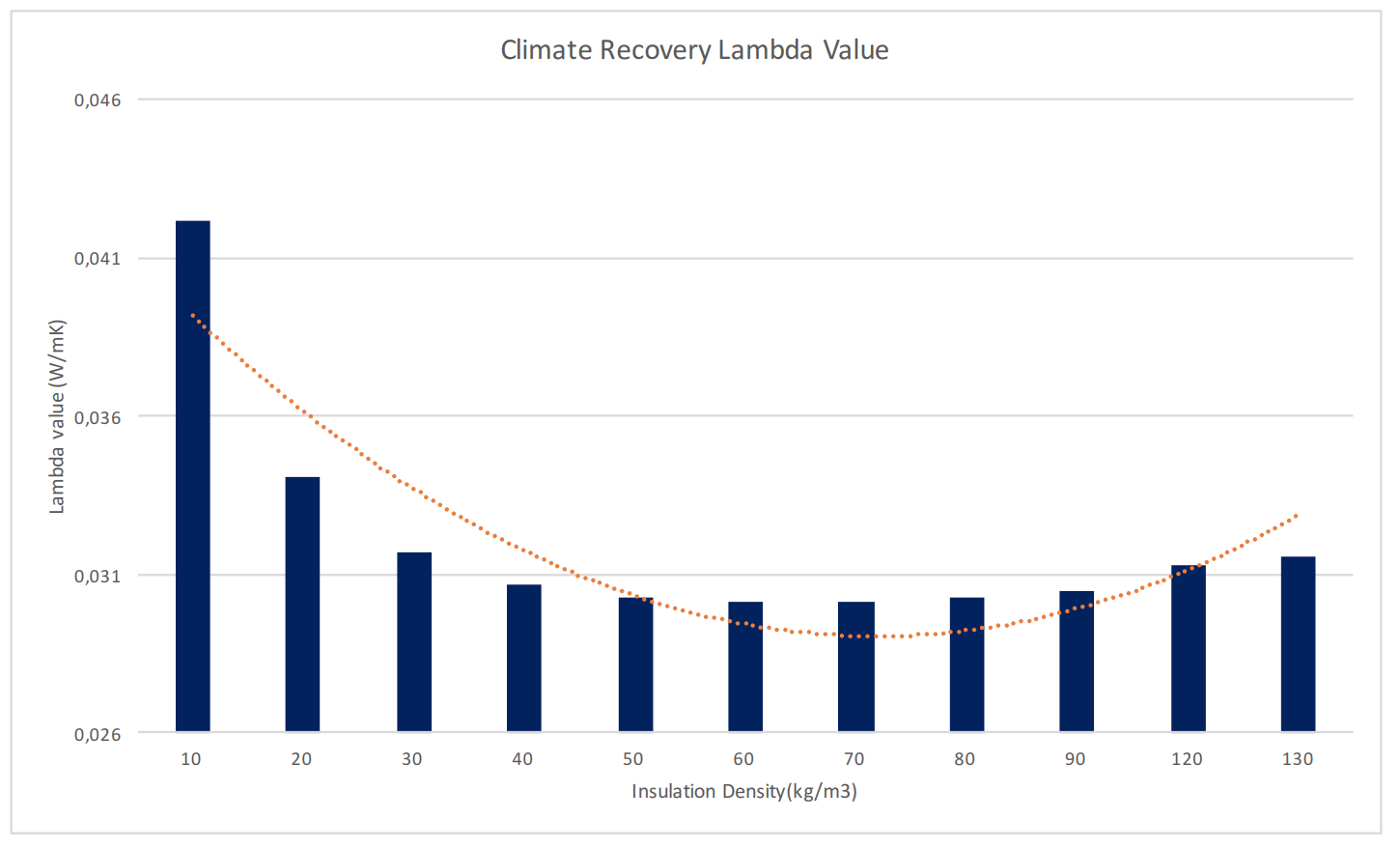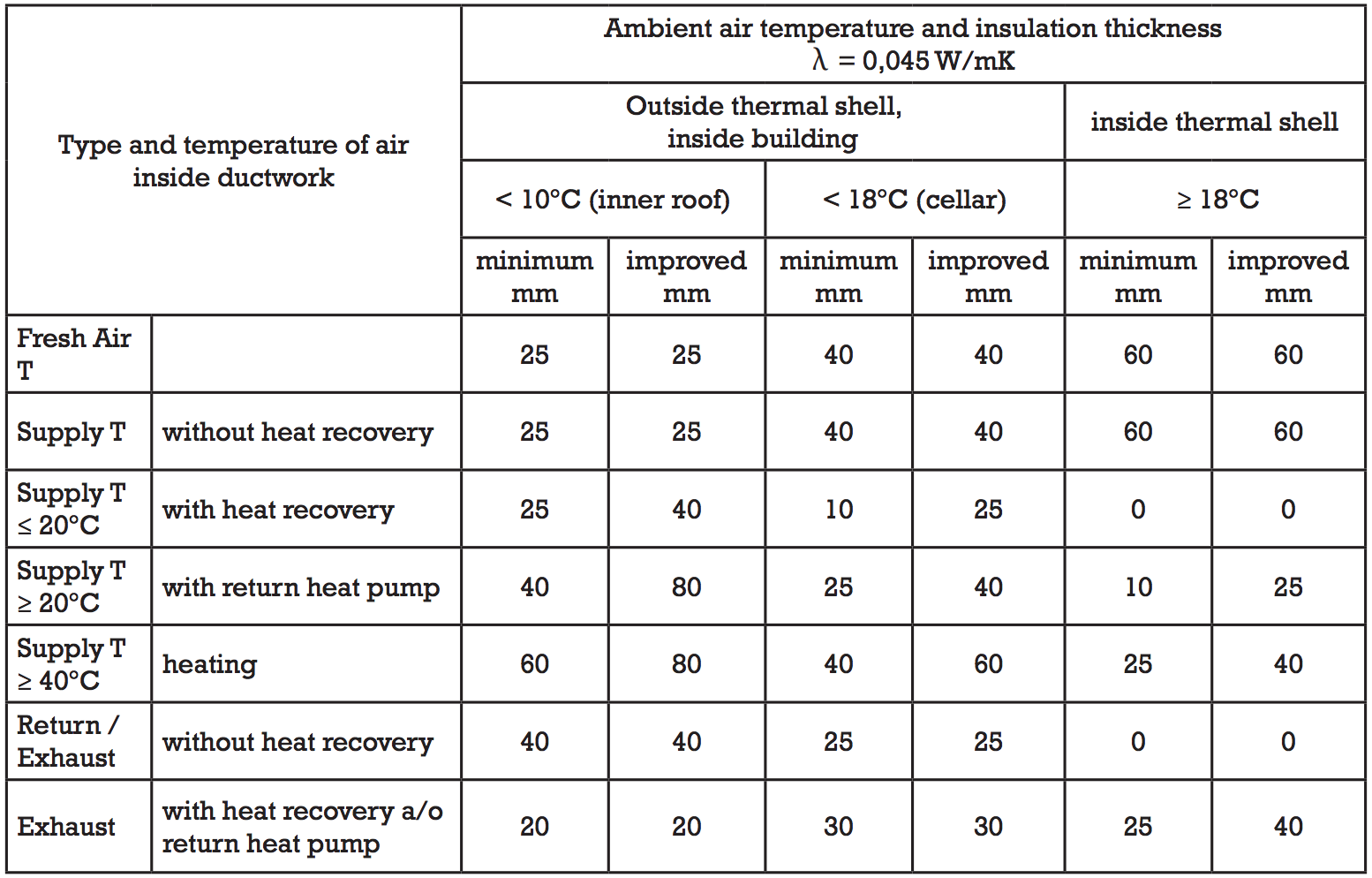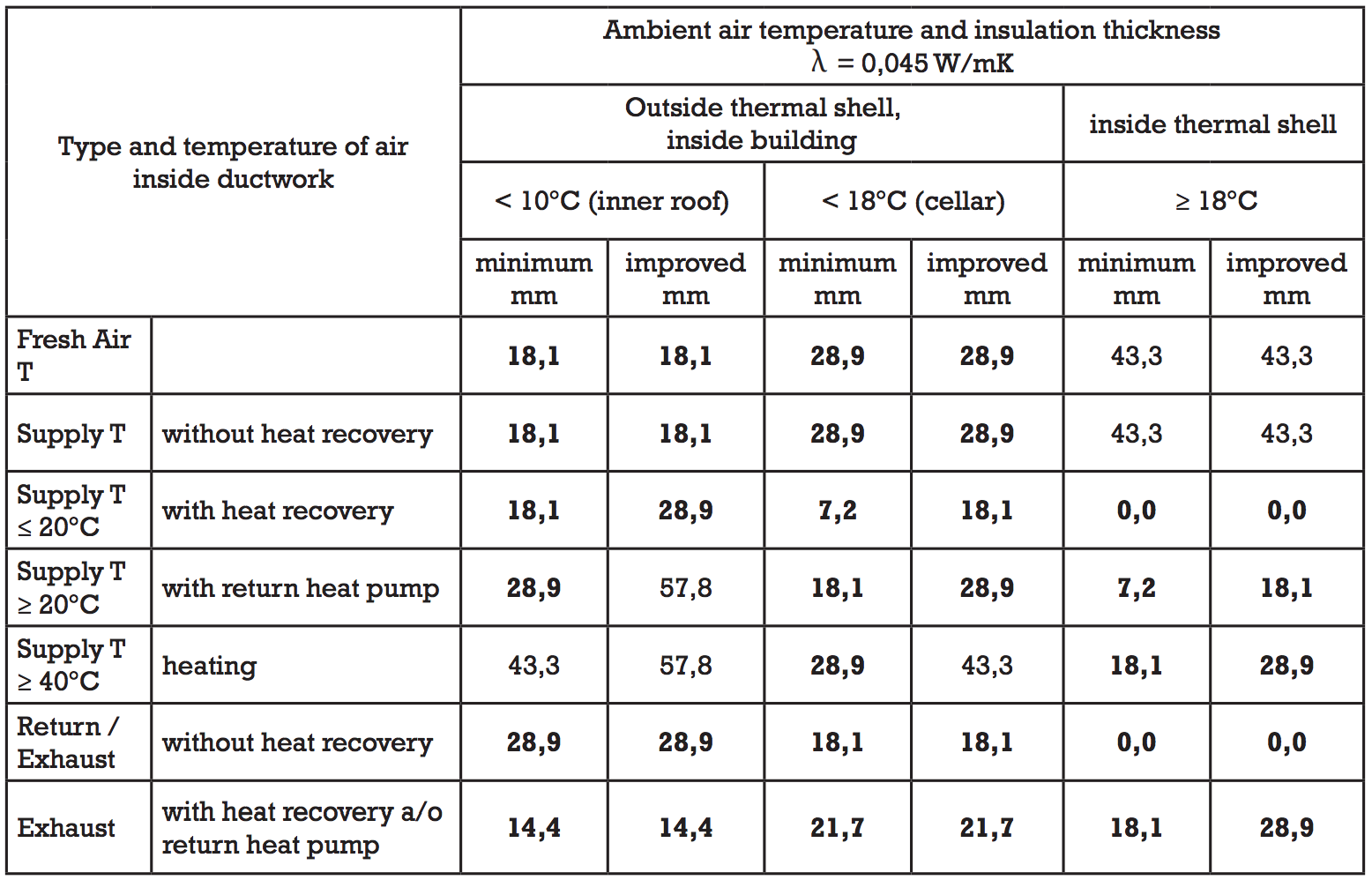 How CR’s increased density affects minimum requirements
How CR’s increased density affects minimum requirements
The goal is to clarify the CR Duct insulation value against an insulated steel duct.
Steel possesses a high thermal conductivity and releases all heat, so the temperature drop across the duct walls is minimal. Heat transfer on the inside of the duct, either of steel or aluminum, similar to CR, minimally affects the total heat transfer. The heat transfer on the outside of the insulation is even less affected; roughly 80% of the value is impacted by insulation quality, its density and how it is applied.
The real difference is that CR offers a truly high quality insulation with no cold bridging and an effective vapor barrier (>140m3 h Pa/mg) on both inside and outside of the duct. The insulation itself should not come in contact with air on the inside or outside of the duct, otherwise there is the potential for condensation.
Climate Recovery allowed an outside institute to research the connection between insulation values and density utilized in CR Products.

Results show that the λ-value at 10kg/m3 ≈ 0,040W/mK and drops to slightly below 0,030 at 70kg/m3 . After this, the l-value increases as density increases. In CR Products, density ranges from 60 to 80 kg/m3 , thus in the most favorable insulation conditions.
The density of insulation that is placed on ventilation ducts today is much lower. It would be extremely difficult to handle an insulation blanket of a comparable density to CR.
Insulation – 0,045 W/mK
DIN 1946 part 6 stipulates the minimal insulation thickness that is accepted in comparison to the difference in temperature between air inside and outside the duct.
This norm writes that the recommended insulation thickness is based on λ-värde = 0,045 W/mK.

To be on the safe side, CR has calculated a λ-value at 0,03235 W/mK.
Insulation – 0,03235 W/mK
The suggested minimum insulation thickness should therefore be:

For example, the minimum requirement is achieved in all cases, save for when outside air is introduced directly to room temperature areas and with supply air temperatures above 40°C. In order to achieve the higher demands, only 30 mm of normal insulation is required.
The end result is that the CR Duct System significantly simplifies and secures the necessary insulation quality.
